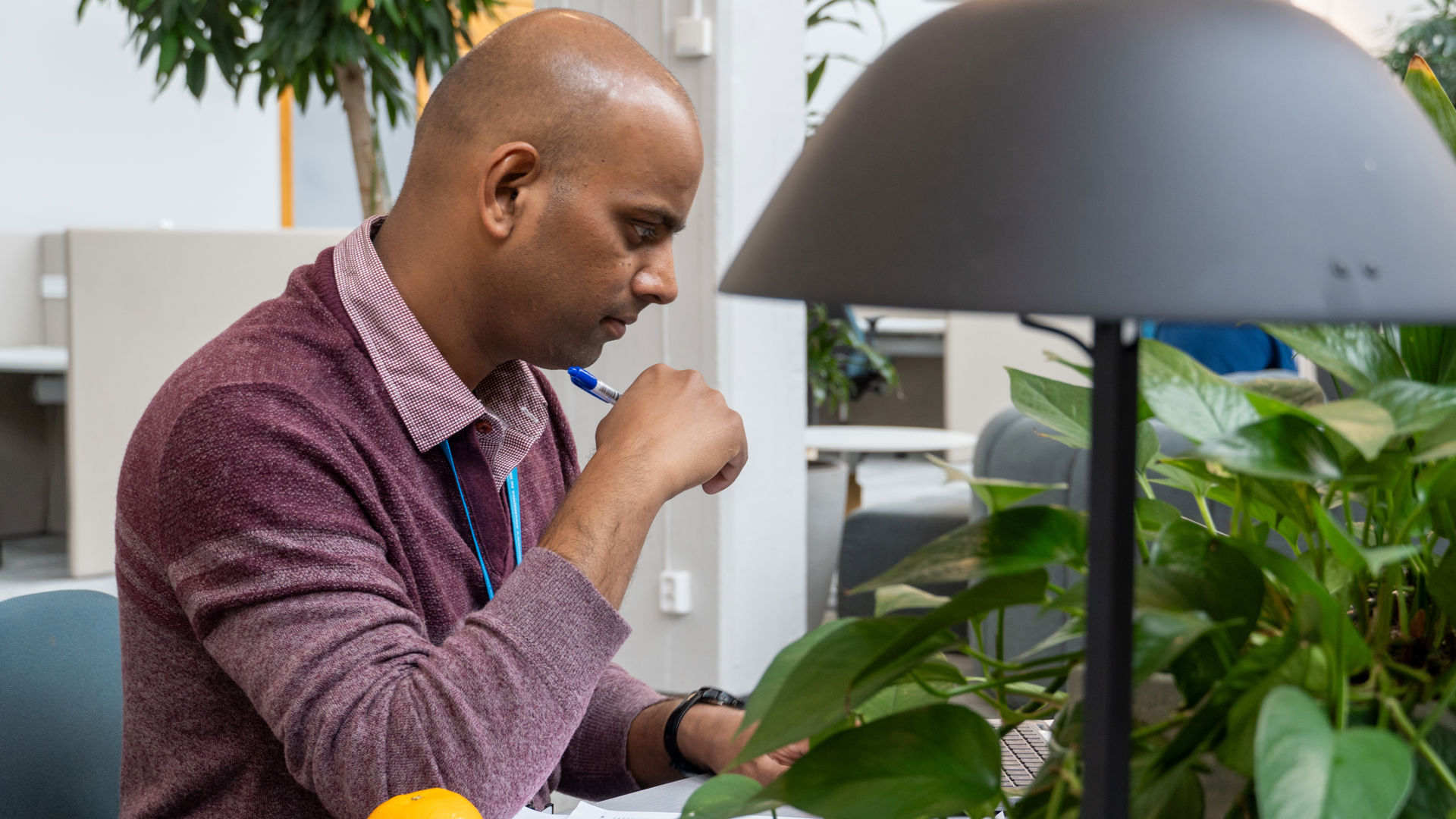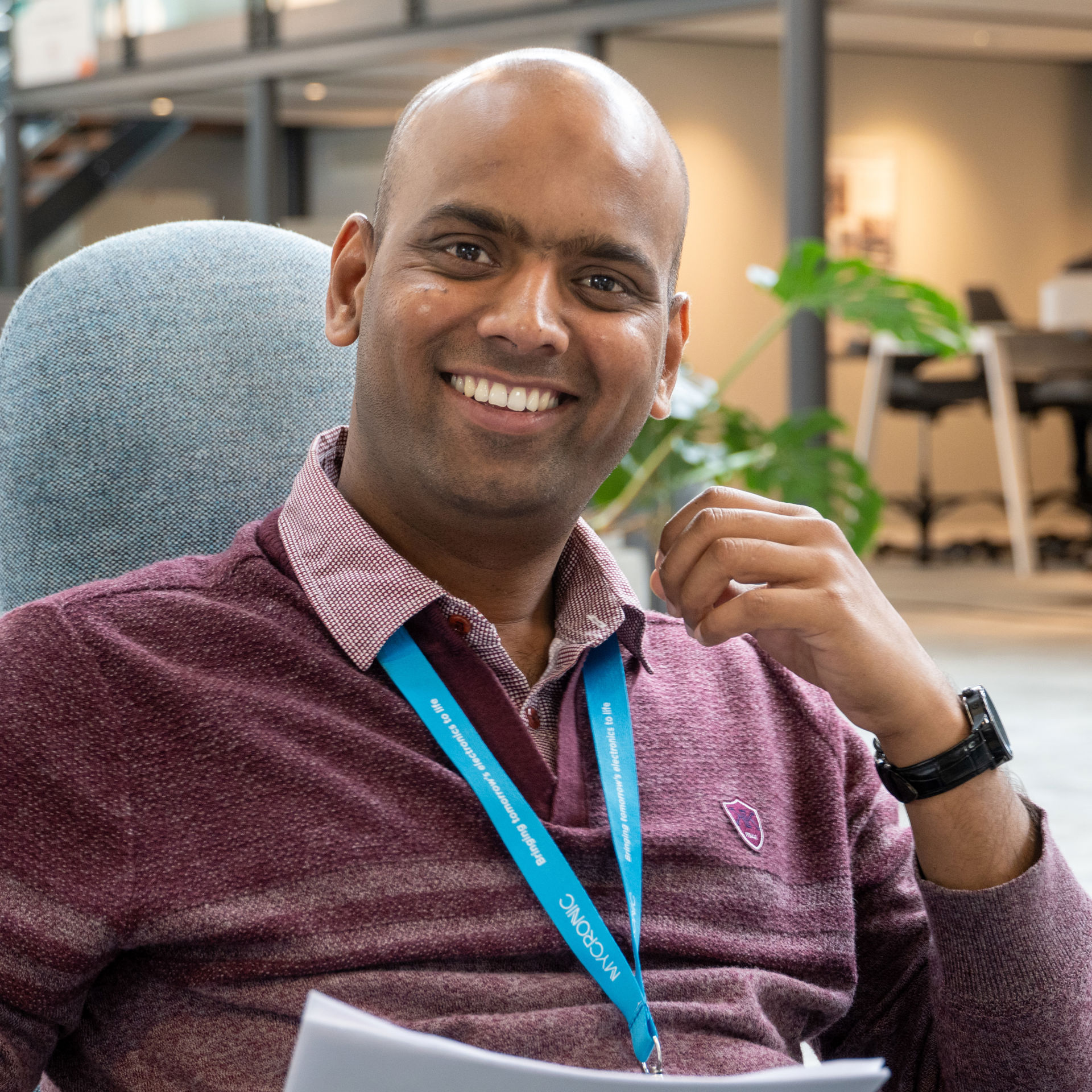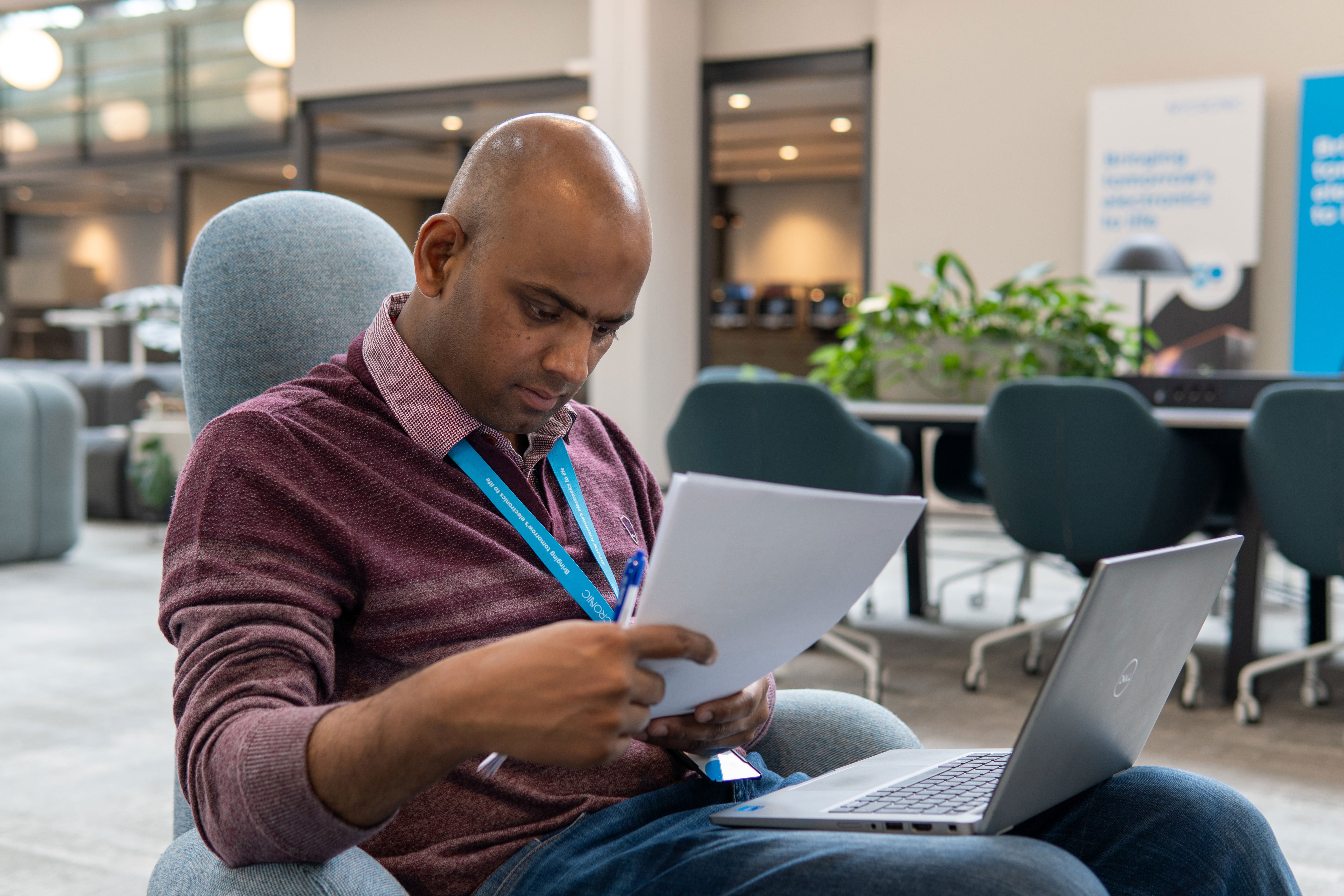The Spark of Genius: Asrar Alam's Global Journey in Electronics and Nanotechnology
In an era of global energy crises and a world facing environmental issues due to the negative impacts of fossil fuels, Asrar Alam’s curiosity has steered him on a path of exploring the possibilities within electronics, nanoscience, and technology. From a small village in India onto a world stage of technological advancements, Asrar is researching groundbreaking solutions together with Mycronic and Kungliga Tekniska Högskolan (KTH) to improve the energy efficiency of electronic architectures that could revolutionize computing.

From India to South Korea to Sweden
Asrar's incredible tale of perseverance and hard work takes him from a small Indian town to research positions in Sweden and South Korea. And he has made great progress, with interesting and ambitious scientific projects that could have a big global impact.
Growing up, Asrar's mother and father were not pursuing any higher education for themselves; however, they always supported Asrar in their fullest capacity, emotionally and financially, to endorse him in his aspirations. Asrar's father, working an ordinary job, sent him to a boarding school so that he could be in an environment of other educated people. "My father wished for me to associate with individuals who could teach me how to think critically, comprehend intellectual processes, and analyze matters from an academic standpoint."
Asrar was the first person in his family to complete higher education and enter the academic field. Not only did he gain academic proficiency and the capacity for ongoing self-improvement, but he also discovered the significance of developing a trustworthy network and the necessity of investing the time and energy necessary to establish and maintain these connections. “It was the primary factor in my door-opening experience. Undoubtedly, things did not always go as planned, and occasionally I came to a dead end. But the way I've been able to follow my career — doing research, for instance, in South Korea and Sweden — is by knowing what intents to trust and what opportunities to take.”

It was the primary factor in my door-opening experience. Undoubtedly, things did not always go as planned, and occasionally I came to a dead end. But the way I've been able to follow my career — doing research, for instance, in South Korea and Sweden — is by knowing what intents to trust and what opportunities to take.
The academic and research journey
Asrar earned a master's degree in nanoscience and technology and a bachelor's degree in electronics and communication after completing his studies in India. Being well-aware of the growing global energy crisis and the environmental issues caused by fossil fuels, he cultivated an increasing interest for energy storage technologies, particularly supercapacitors. In his devotion to improve the performance and safety of supercapacitors, he started working on various materials and techniques.

Later on, Asrar received a Brain Korea fellowship to study for a PhD at the Jeonbuk National University in South Korea on the recommendation of a professor. His research was on the application of silver nanoparticles to improve the conductivity, surface energy, and electrolyte uptake of different supercapacitor materials, including metal oxides, carbon-based materials, and MXene. Apart from projects on supercapacitors, he also worked on electrochromic devices and DNA sensors. During his PhD, he filed one patent and published twenty publications in scientific reputed journals. Following his doctorate, he was awarded a second grant financed by the Wallenberg Initiative Materials Science for Sustainability (WISE) to study as a postdoc in Sweden, at Mycronic and the Royal Institute of Technology (KTH) where he joined a neuromorphic computing project involving electrochemical transistors. According to him, electrochemical transistors are devices that can replicate the ways in which biological synapses and neuronal function and offer the opportunity to radically decrease the energy consumption of computational devices. This approach could also revolutionize the way displays are designed and manufactured which naturally is of interest for Mycronic. Additionally, he discusses the potential and difficulties in the field of electrochemical transistors, as well as the function of 2D materials like MXene.
Hoping to achieve breakthroughs in Sweden
Asrar is currently studying Swedish and becoming more and more integrated into the Swedish society. Among other things, he enjoys the diversity, extracurricular activities, and supportive coworkers of the Swedish workplace. With the plan to spend a minimum of ten years in Sweden to further his studies on electrochemical transistors, Asrar aspires to create a device that combines computation and display capabilities to help improve the performance and safety of supercapacitors. In two or three years, he aims to make a breakthrough in Boolean algebra and neuromorphic computing. "I enjoy being in Sweden, and I'm excited and driven to continue the research. Working with Mycronic is enjoyable, and I am appreciative of the chance to learn from other professionals in the field as well as my instructors and mentors.